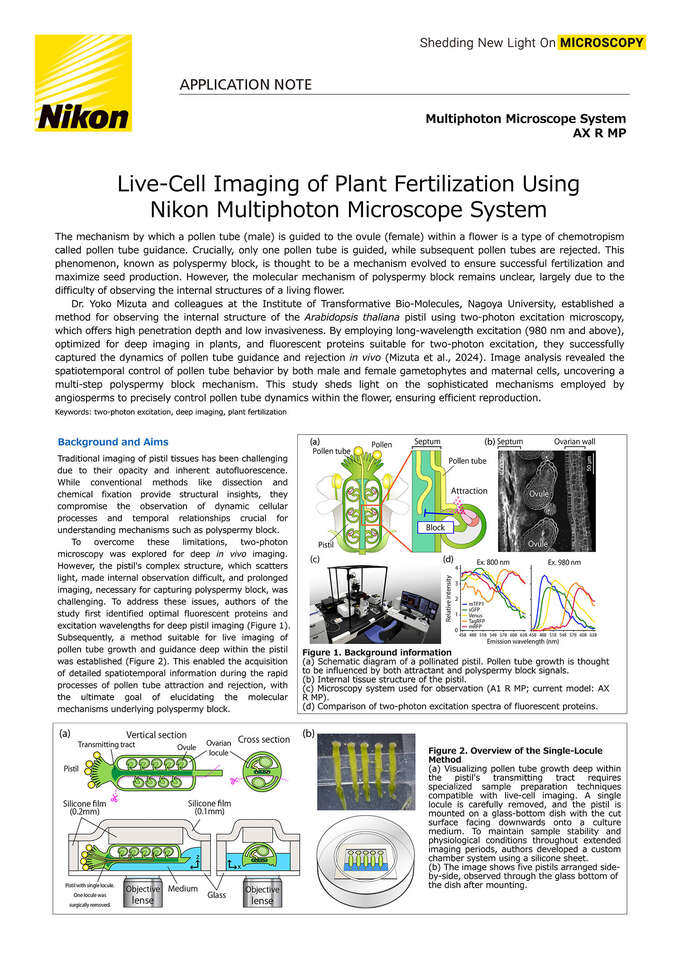- zh Change Region
- Global Site
应用手册

Live-Cell Imaging of Plant Fertilization Using Nikon Multiphoton Microscope System
2025年4月
The mechanism by which a pollen tube (male) is guided to the ovule (female) within a flower is a type of chemotropism called pollen tube guidance. Crucially, only one pollen tube is guided, while subsequent pollen tubes are rejected. This phenomenon, known as polyspermy block, is thought to be a mechanism evolved to ensure successful fertilization and maximize seed production. However, the molecular mechanism of polyspermy block remains unclear, largely due to the difficulty of observing the internal structures of a living flower.
Dr. Yoko Mizuta and colleagues at the Institute of Transformative Bio-Molecules, Nagoya University, established a method for observing the internal structure of the Arabidopsis thaliana pistil using two-photon excitation microscopy, which offers high penetration depth and low invasiveness. By employing long-wavelength excitation (980 nm and above), optimized for deep imaging in plants, and fluorescent proteins suitable for two-photon excitation, they successfully captured the dynamics of pollen tube guidance and rejection in vivo (Mizuta et al., 2024). Image analysis revealed the spatiotemporal control of pollen tube behavior by both male and female gametophytes and maternal cells, uncovering a multi-step polyspermy block mechanism. This study sheds light on the sophisticated mechanisms employed by angiosperms to precisely control pollen tube dynamics within the flower, ensuring efficient reproduction.
Keywords: two-photon excitation, deep imaging, plant fertilization
